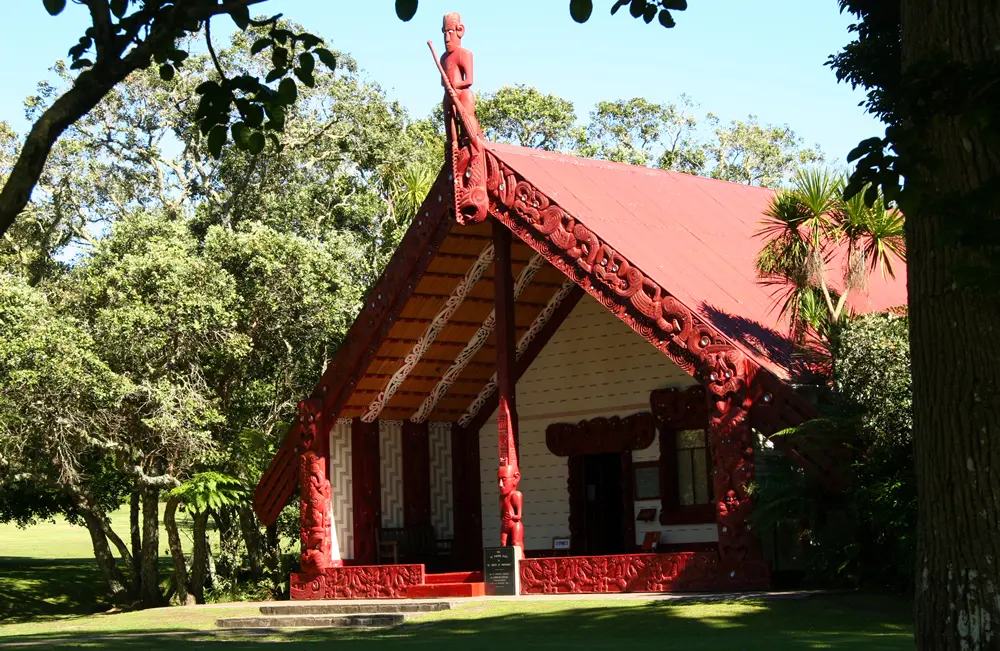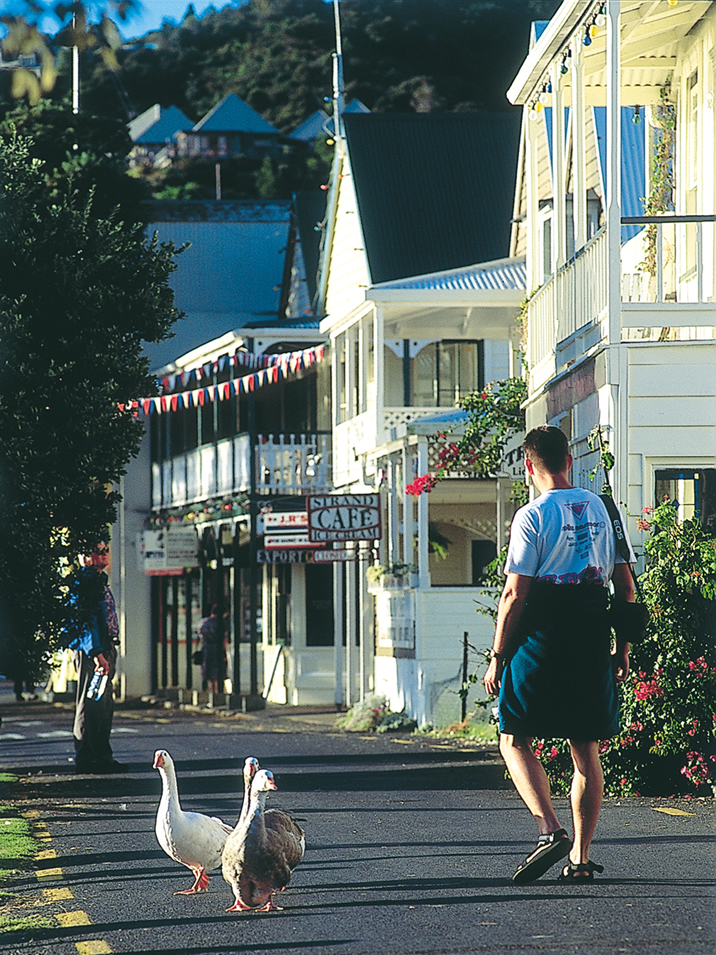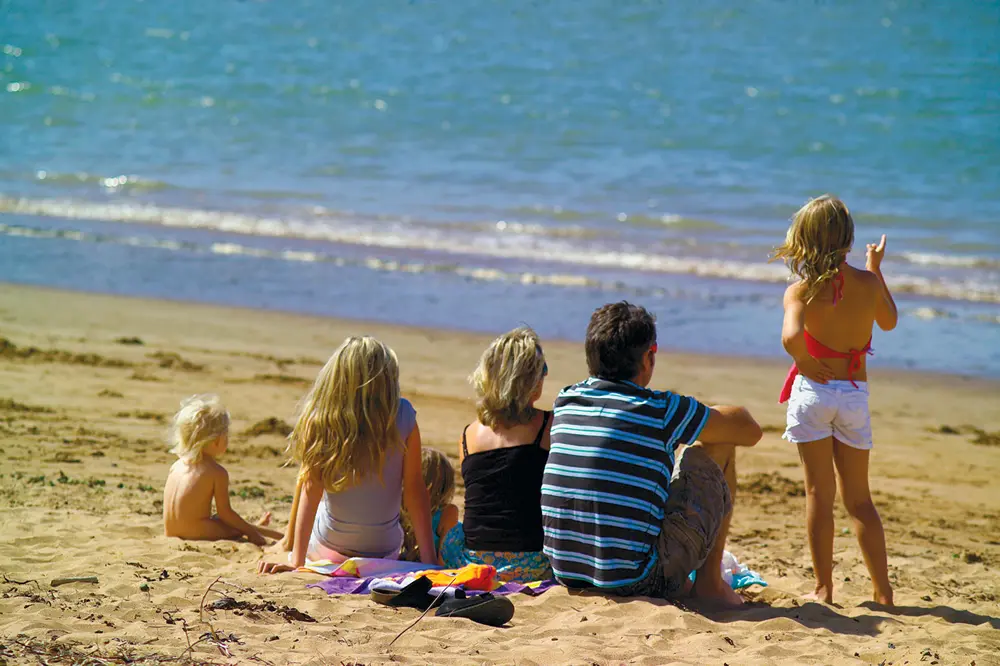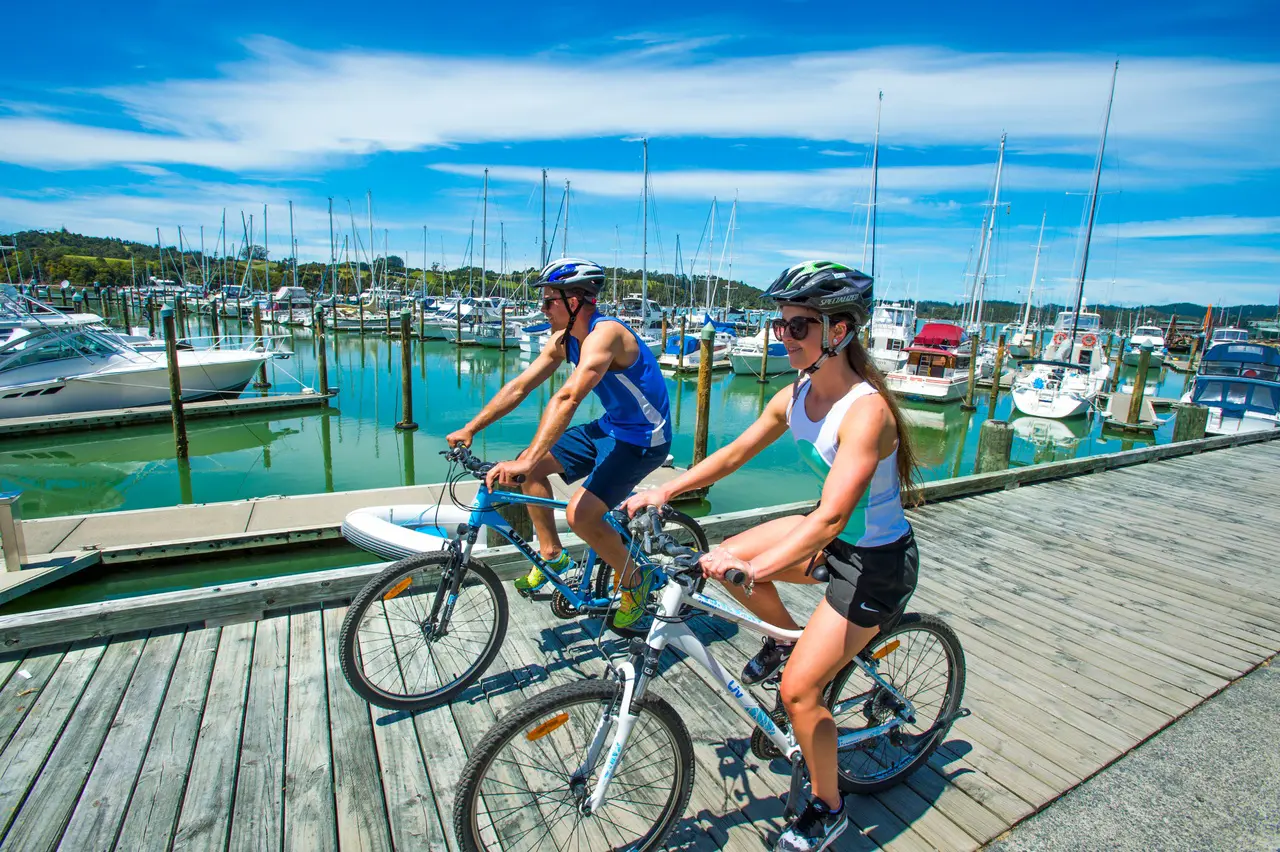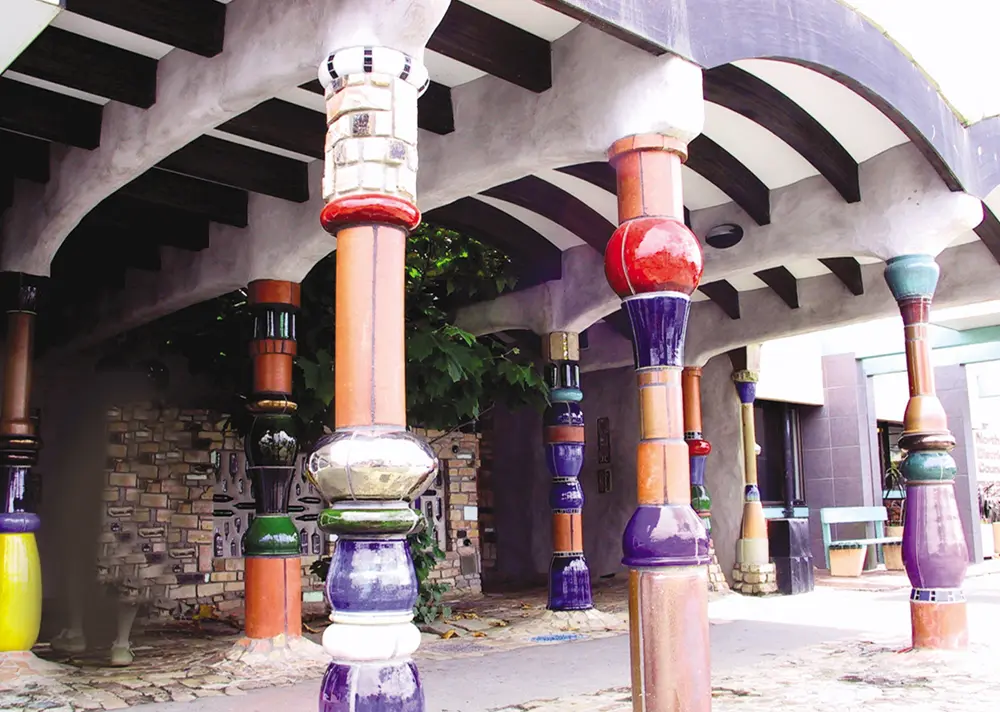The Bay of Islands is one of New Zealand’s most rewarding destinations, where turquoise waters meet subtropical forest and a rich history unfolds at every turn. Located in Northland, about 240km (149 miles) north of Auckland, this stunning region encompasses 144 islands scattered across sheltered bays and inlets, creating a maritime playground that’s been drawing visitors for centuries.
Discovering the Bay of Islands
The Bay of Islands isn’t just about postcard-perfect scenery, though there’s plenty of that. This is where modern New Zealand began, where European and Māori cultures first came together in complex and lasting ways. The region’s three main towns; Paihia, Russell, and Kerikeri, each offer their own character and appeal.
Paihia serves as the main tourist hub, with easy access to boat trips, water activities, and accommodation options. Russell, New Zealand’s first capital, retains its historic charm with weatherboard buildings and a quieter pace. Kerikeri, slightly inland, is known for its historic sites, markets, and thriving arts scene.
The climate here is subtropical, meaning warm, humid summers and mild winters. You can visit year-round, though summer (December to February) brings the warmest water temperatures and the busiest crowds. Autumn and spring offer excellent weather with fewer people, while winter remains surprisingly pleasant for exploring on foot.
The region is home to significant Māori history and culture. This area was densely populated by Ngāpuhi and other iwi long before European arrival, and you’ll find important archaeological sites, marae, and cultural experiences throughout the region.
Places to See
The Bay of Islands rewards exploration, whether you’re interested in natural beauty, colonial history, or Māori heritage. From the iconic Hole in the Rock to quiet coves only accessible by boat, there’s always somewhere new to discover.
Places to See in the Bay of Islands covers the full range of locations you can visit:
Historic Sites
The region’s European history is remarkably well preserved. The Treaty House at Waitangi is where New Zealand’s founding document was signed in 1840. The Waitangi Treaty Grounds include a museum, carved meeting house, and the impressive waka (war canoe) display. In Russell, you’ll find Christ Church, New Zealand’s oldest standing church, complete with musket holes in its walls from early conflicts. Kemp House in Kerikeri, built in 1822, is the country’s oldest surviving building and offers a glimpse into early missionary life.
Natural Landmarks
The Hole in the Rock (Motukōkako) at Piercy Island is the Bay’s most photographed feature, a natural archway carved by millennia of wave action. When conditions allow, some boat operators navigate right through the hole, though this depends on swell and tide. The region’s beaches range from popular swimming spots like Paihia Beach and Long Beach to secluded stretches you’ll need a boat to reach. Each has its own character, from sheltered sandy coves perfect for families to dramatic coastal formations with rock pools and caves. Cape Brett and the surrounding headlands provide striking coastal scenery, with sheer cliffs dropping into deep blue water.
Islands
The Bay’s 144 islands range from tiny rocky outcrops to substantial landmasses with walking tracks and facilities. Urupukapuka Island is the largest and most developed for visitors, with several beaches, walking tracks, and basic camping facilities. Moturua Island, a pest-free sanctuary, offers excellent birdwatching and snorkelling. Roberton Island‘s lagoon creates a natural swimming pool at high tide. Many islands remain uninhabited and can only be visited by private boat.
Waterfalls
Rainbow Falls, just outside Kerikeri, drops 27m (89 feet) into a pristine pool surrounded by native forest. The walk from the car park takes about ten minutes and is suitable for most fitness levels. Haruru Falls, closer to Paihia, is a horseshoe-shaped waterfall where the Waitangi River tumbles over basalt rocks. You can reach it by road, walking track, or kayak, and the surrounding area includes mangrove forests and birdlife.
Viewpoints
Flagstaff Hill above Russell provides panoramic views across the bay and out to the Pacific Ocean. The hill itself is historically significant, the flagstaff having been cut down four times by Ngāpuhi chief Hōne Heke in the 1840s as a protest against British authority. Various coastal lookouts throughout the region offer opportunities to spot dolphins, watch boats navigating the channels, or simply take in the island-dotted seascape.
Māori Sites
The Bay of Islands contains numerous sites of significance to Ngāpuhi and other local iwi. Many pā (fortified village) sites remain visible in the landscape, particularly on headlands and hilltops. The Waitangi Treaty Grounds provide the most accessible introduction to Māori culture and history in the region, with cultural performances, exhibitions, and guided tours explaining both traditional ways of life and the events surrounding the Treaty signing. Several marae welcome visitors by arrangement, offering deeper cultural experiences for those interested in learning more about tikanga Māori (Māori customs).
Each location in our directory includes practical details about access, facilities, whether it’s suitable for families, and what you need to know before visiting.
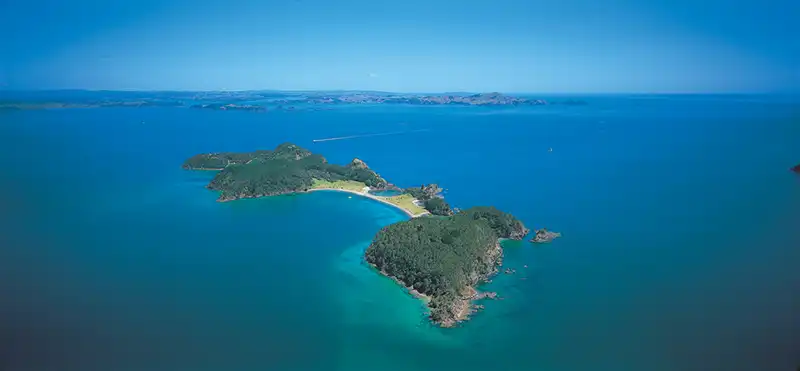
Things to Do
Finding things to Do in the Bay of Islands is easy using our local guides. The Bay of Islands offers activities that range from completely free to once-in-a-lifetime experiences. The variety means you can fill your days with adventure or relaxation, depending on your mood and budget.
On the Water
Being on the water is almost mandatory in the Bay of Islands. Sailing trips and cruises range from a few hours to multi-day charters, with options for experienced sailors, complete beginners or visitors that just want to sit and take in the sights. Kayaking lets you explore at your own pace, accessing beaches and coves that boats can’t reach. Paddle boarding has become increasingly popular, particularly in the calmer bays. Fishing charters target kingfish, snapper, and marlin depending on the season. If you’re lucky you may get to see dolphins that frequent the bay from one of the tours that operate year-round. Common and bottlenose dolphins are regularly spotted. Diving in the Bay of Islands offers wreck dives, including the Rainbow Warrior in Matauri Bay, along with rocky reefs and caves where you’ll encounter a variety of fish species and occasional rays.
Walks and Hikes
The region’s walking tracks cater to all abilities. Gentle coastal strolls around Paihia and Russell take 30 minutes to an hour and suit families with young children. Medium-length walks like the Waitangi Mountain Bike Park tracks (also open to walkers) provide a few hours of exploration through native bush. The Cape Brett Track, a challenging 16km (10 mile) one-way trek to the lighthouse, requires good fitness and usually takes two days with an overnight stay at the DOC hut. Many walks offer swimming opportunities along the way, particularly useful on warm summer days.
Māori Cultural Experiences
Learning about Māori culture adds depth to any Bay of Islands visit. The Waitangi Treaty Grounds offer daily cultural performances that explain traditional songs, dances, and customs. Some local operators provide workshops in traditional crafts like flax weaving or carving. Guided tours led by Māori guides share stories about the land, its history, and the ongoing significance of this region to Ngāpuhi. These experiences range from brief introductions to half-day or full-day immersions.
Historic Tours
Guided walks through Russell bring the town’s colourful past to life, from its reputation as the “hellhole of the Pacific” in whaling days to its brief stint as New Zealand’s capital. Visits to Kemp House reveal how early missionaries lived, with original furnishings and detailed records of daily life. The Treaty House tours explain the complex circumstances surrounding the Treaty of Waitangi’s signing and its ongoing implications. Self-guided heritage trails in all three main towns let you explore at your own pace with information panels along the way.
Wildlife Encounters
Beyond the popular dolphin tours, the Bay offers diverse wildlife experiences. Penguin spotting trips seek out the little blue penguins that nest around the islands. Whale watching operates seasonally when migrating species pass through. Birdwatchers find plenty to observe, particularly around the pest-free islands where native species flourish. Even from shore, you’re likely to spot shags, gulls, terns, and occasionally gannets diving for fish.
Adventure Activities
For those seeking adrenaline, parasailing provides aerial views of the bay while you’re suspended 200m (656 feet) above the water. Jet skiing tours zip around the islands at speed. Coasteering combines rock hopping, swimming, and cliff jumping along the rocky coastline. Skydiving operations offer tandem jumps with views of the bay during the descent. These activities operate weather-dependent and usually require advance booking during peak season.
Relaxing Pursuits
Not everything needs to be energetic. Beach days cost nothing and the region has dozens of options, from popular spots with facilities to secluded beaches where you’ll have the sand to yourself. Fishing from the wharf or rocks is a favourite local pastime. Browsing the markets in Kerikeri or the waterfront craft stalls provides gentle entertainment and a chance to chat with locals. Simply watching the boats come and go from a waterfront café counts as a perfectly acceptable activity, particularly after a few busy days.
The directory includes seasonal considerations, booking information, typical costs, and what to bring for each activity.

Where to Eat
Food in the Bay of Islands reflects both the region’s maritime location and its multicultural population. You’ll find everything from fish and chips eaten on the beach to fine dining experiences featuring local ingredients.
Fresh seafood dominates many menus, which makes sense given the location. Snapper, kingfish, and oysters are local favourites, and many restaurants source directly from local fishers and growers. Kerikeri’s fertile soils provide subtropical fruits, organic vegetables, and the famous Kerikeri oranges.
Cafés
The region’s cafés range from waterfront establishments perfect for watching the morning ferry depart to cosy spots tucked into Russell’s historic buildings. Most open early for breakfast and close by mid-afternoon, serving cabinet food, all-day brunch menus, and excellent coffee. Many use local suppliers and offer vegetarian options alongside traditional bacon and eggs. Paihia has the highest concentration, while Russell and Kerikeri each have their local favourites that draw regulars.
Casual Dining
Fish and chips remain a Bay of Islands staple, best enjoyed on the beach or wharf while watching the sun set. Several takeaway shops compete for the title of best battered fish, and locals have strong opinions about which is superior. Pizza places offer both traditional and gourmet options, with some providing waterfront dining. Burger joints have evolved beyond basic offerings to include local beef, fresh fish burgers, and creative vegetarian options. These casual spots generally don’t require bookings and suit families with children.
Restaurants
Mid-range restaurants form the backbone of the Bay’s dining scene. They typically open for dinner and sometimes lunch, offering table service and more extensive menus than cafés. Seafood features prominently, often prepared simply to let the fresh ingredients shine. Many incorporate Asian influences, reflecting New Zealand’s Pacific location and diverse population. Local produce like Kerikeri citrus, kumara, and seasonal vegetables appear regularly. These restaurants usually welcome walk-ins outside peak season but benefit from bookings during summer.
Fine Dining
Special occasion dining in the Bay of Islands focuses on carefully crafted menus that highlight regional ingredients. These establishments typically offer degustation options alongside à la carte choices, match wines to courses, and maintain higher service standards. The pace is slower, with meals often extending over two to three hours. Dress codes vary but lean toward smart casual. Bookings are essential, particularly for weekend dinners during holiday periods. Prices reflect the quality and experience rather than pure portion size.
Pubs and Bars
Classic Kiwi pub meals feature at several venues, serving generous portions of steaks, roasts, and seafood alongside a good selection of beer. Local craft breweries have established tap rooms where you can try their beers paired with simple food. Wine bars offer more curated selections, often featuring New Zealand wines with cheese platters and small plates. These venues typically have a relaxed atmosphere where visitors and locals mix easily, and live music appears regularly, particularly during summer.
Markets
The Bay of Islands has a range of local markets. Kerikeri Farmers’ Market operates every Sunday morning, providing fresh produce, baked goods, preserves, and ready-to-eat breakfast options. It’s as much a social occasion as a shopping trip, with locals catching up over coffee and live music creating a village atmosphere. Paihia occasionally hosts night markets during summer where food trucks and stalls offer diverse cuisines. These markets let you sample local specialties and chat with the people who grew or made your food.
Dietary Requirements
The increasing number of visitors with dietary restrictions has led to more options for vegetarian, vegan, and gluten-free diets. Most cafés and restaurants now mark allergens on menus and can adapt dishes. Dedicated vegetarian restaurants remain rare, but plant-based options appear on most menus. Asian restaurants typically offer the widest vegetarian selection. Gluten-free bread and pasta are standard at many establishments. It’s still worth mentioning dietary requirements when booking restaurants to ensure they can accommodate you properly.
Each listing includes cuisine style, price range, location, and what makes it worth visiting.

Events
Events in the Bay of Islands celebrate everything from sailing heritage to local produce. Some events have been running for decades, while others are newer additions that reflect the region’s evolving culture.
The timing of your visit might coincide with anything from a sailing regatta to a jazz festival. Summer brings the most activity, but you’ll find events year-round.
Annual Festivals
The Bay of Islands Sailing Week in January draws yachts from across New Zealand and beyond, with racing during the day and social events each evening. The Country Rock Festival brings live music over a weekend, typically in autumn. Waitangi Day on 6 February is marked with commemorations at the Treaty Grounds, including a dawn ceremony, cultural performances, and public speeches. The day holds different meanings for different New Zealanders, and the Treaty Grounds provide space for both celebration and reflection on the nation’s ongoing journey.
Markets
Regular farmers’ markets operate weekly, with Kerikeri’s Sunday market being the largest and most established. These markets offer local produce, plants, crafts, and hot food, operating year-round regardless of weather. Craft markets appear seasonally, particularly in the lead-up to Christmas, showcasing local artists, woodworkers, jewellers, and other artisans. Night markets pop up during summer in Paihia, transforming the waterfront into a festival atmosphere with food stalls, live music, and family entertainment.
Sports Events
Fishing competitions throughout the year target different species, from the summer kingfish tournaments to winter snapper contests. These draw serious anglers but also offer social categories for families. Fun runs and walking events use the region’s scenic tracks and roads, catering to competitive runners and casual participants. Water sports events include stand-up paddleboard races, ocean swimming competitions, and outrigger canoe racing. Most welcome visitors to participate or spectate.
Cultural Celebrations
Māori festivals throughout the year celebrate various aspects of traditional and contemporary culture. Matariki, the Māori New Year marked by the rising of the Pleiades star cluster (usually in June or July), brings community gatherings, storytelling, and feasting. Kapa haka competitions showcase traditional performing arts with groups competing in singing, dance, and the powerful haka. Cultural performances at the Treaty Grounds operate daily rather than as special events, but they increase in frequency and elaborateness during major festivals.
Food and Wine
Taste festivals highlight regional produce, often held in autumn when local citrus and vegetables reach peak season. Several restaurants coordinate special dining events, such as progressive dinners where guests move between venues for different courses. Wine tastings occasionally feature New Zealand wines paired with local seafood or produce. These events vary from casual gatherings to more formal celebrations, and they provide opportunities to sample dishes you might not encounter on regular restaurant menus.
Community Events
Local school galas, church fairs, and fundraisers welcome visitors who happen to be around. These events offer a glimpse into everyday community life beyond the tourist infrastructure. They’re particularly enjoyable if you’re staying longer term or want to meet locals. Expectations are relaxed, prices are low, and the atmosphere is genuinely welcoming. You might encounter a hangi (traditional earth oven feast), white elephant stalls, sausage sizzles, and home baking that locals have contributed.
Seasonal Activities
Christmas in the Bay of Islands brings decorated boats parading through the harbours, carols by the beach, and increased festivities at restaurants and hotels. New Year’s Eve fireworks displays light up the waterfront in Paihia and Russell, with people gathering on beaches and boats to watch. Winter may be quieter, but it brings its own rhythm with locals reclaiming their towns, midweek accommodation deals, and the chance to experience the region without crowds.
The directory is regularly updated with dates, venues, and booking information where relevant.

Where to Stay
Accommodation in the Bay of Islands ranges from freedom camping spots to luxury lodges with private beaches. Your choice depends on your budget, travel style, and how you want to experience the region.
Paihia offers the most variety and is the practical base for most visitors, especially if you don’t have your own transport. Russell provides a quieter, more historic atmosphere but fewer dining options. Kerikeri suits those with a car who want to explore at their own pace. Smaller settlements like Opua, Waitangi, and Haruru Falls offer alternatives if you prefer staying outside the main centres.
Hotels and Motels
Hotels in the Bay of Islands range from budget-friendly, with basic rooms and parking to waterfront hotels with restaurants, pools, and full concierge services. Bay of Islands motels typically offer self-contained units with kitchenettes, making them practical for families or longer stays. Many are walking distance to beaches and town centres. Standards vary considerably, so it’s worth reading recent reviews. Peak season (December to February) requires advance booking, while winter often brings significantly reduced rates and special offers for stays of several nights.
Holiday Parks
Holiday parks in the Bay of Islands provide the most variety within a single property, accommodating campers, caravanners, and those wanting cabin accommodation. Facilities typically include communal kitchens, BBQ areas, playgrounds, and swimming pools. The social atmosphere suits families and groups, with children often making friends with other young guests. Standards range from basic DOC-style sites to well-maintained parks with modern amenities. Some occupy premium waterfront locations that would cost significantly more in hotel accommodation. They’re popular with New Zealand families during school holidays, so book ahead if visiting in late December or January.
Backpackers and Hostels
Bay of Islands Backpackers & Hostels offer budget accommodation designed primarily for younger travellers and those on working holidays, backpackers offer dormitory beds and some private rooms. Communal areas encourage socialising, and many organise activities like pub crawls, volleyball games, or discounted adventure bookings. Kitchens let you prepare your own meals, and notice boards advertise local jobs, second-hand gear, and travel companions. The atmosphere varies between party-focused hostels and quieter spots that attract older travellers. Quality also varies, so check recent reviews regarding cleanliness and noise levels.
Bed and Breakfasts
For those not familiar with B&Bs… Bed & Breakfast is hosted accommodation where you stay in someone’s home. Bed and breakfasts provide personal attention and local knowledge that larger establishments can’t match. Breakfast is included and usually features home baking and local produce. Hosts often provide detailed advice about what to see and do, sometimes sharing lesser-known spots that don’t appear in guidebooks. The experience suits those who enjoy conversation and don’t mind the informality of staying in someone’s house. Most have only a few rooms, creating an intimate atmosphere. Shared bathrooms are common in older properties, though many have been renovated with ensuites.
Self-Contained Accommodation
Holiday homes, apartments, and baches (NZ-speak for holiday homes) let you live independently with full kitchen facilities and private spaces. This option suits families, groups, or anyone planning a longer stay. Properties range from simple one-bedroom units to large houses that sleep 10 or more people. Locations vary from town centres to isolated beachfront settings. You’ll need to bring or buy your own food and handle your own cleaning or pay a fee for cleaning. Most have minimum stay requirements, particularly during peak season.
Luxury Lodges
High-end properties offering exceptional service, exclusive locations, and premium facilities. These lodges typically limit guest numbers to maintain privacy and personalised attention. Expect gourmet meals, quality wines, and activities arranged as part of your stay. Locations might include private islands, clifftop positions, or secluded forest settings. Rooms feature high-end furnishings, often with views, and properties might include spas, heated pools, or private beaches. Prices reflect the exclusivity, starting from several hundred dollars per night and rising substantially from there. Some require minimum two-night stays.
Camping
DOC (Department of Conservation) campsites offer basic facilities in scenic locations, usually costing less than $20 per adult per night. These sites provide toilets and sometimes cold showers, but little else. You’ll need to be self-sufficient with cooking equipment and supplies. Freedom camping (camping outside designated sites) is restricted in the Bay of Islands, with most areas requiring you to have a certified self-contained vehicle. Local bylaws enforce these restrictions, and fines apply for non-compliance. Always check current regulations before planning to freedom camp.
Unique Stays
Houseboats let you sleep on the water, waking to gentle rocking and water views from every window. Glamping operations provide the camping experience with comfortable beds, proper bathrooms, and sometimes electricity. Farmstays place you in working farm environments where you can participate in daily activities if interested. These unusual options cost more than standard accommodation but provide memorable experiences. Availability is limited, so book well ahead, particularly for summer holidays.
Each listing covers location, price range, facilities, suitability for families, and booking considerations. We note properties that are particularly popular and may need advance booking during peak season.

Planning Your Visit
Most visitors spend three to five days in the Bay of Islands, which allows time to explore both on water and on land without rushing. A week or more gives you space to relax and discover quieter spots beyond the main tourist areas.
Getting here is straightforward. You can drive from Auckland in about three and a half hours, catch a bus, or fly into Kerikeri Airport. Once here, having your own vehicle makes exploration easier, though you can base yourself in Paihia and use ferries, water taxis, and local tour operators to get around.
The Bay of Islands works for all types of travellers. Families find plenty of safe beaches and activities suitable for children. Couples appreciate the romantic settings and quality restaurants. Solo travellers and backpackers enjoy the social atmosphere and range of affordable options. Older visitors value the accessible walks, comfortable accommodation, and well-organised tours.
Respecting the Region
The Bay of Islands is a special place that requires care from visitors. The marine environment is protected in various ways, with marine reserves where fishing is prohibited and guidelines for interacting with marine mammals. On land, stick to marked tracks, take your rubbish with you, and respect private property and Māori land.
Understanding some basics about Māori culture enriches your visit. The Treaty of Waitangi was signed here in 1840, and this region remains central to New Zealand’s ongoing relationship between Māori and the Crown. Visit the Treaty Grounds with an open mind, listen to the stories, and approach Māori cultural experiences with respect.
Start Planning
The Bay of Islands rewards both careful planning and spontaneous exploration. Browse through our directories to start building your itinerary, but leave room for unexpected discoveries. Talk to locals, ask for recommendations, and don’t be afraid to venture beyond the most popular spots.
Whether you’re here for history, adventure, relaxation, or a bit of everything, the Bay of Islands delivers. The combination of natural beauty, accessible activities, and genuine Kiwi hospitality makes this one of New Zealand’s most welcoming destinations.
Map
Sorry, no records were found. Please adjust your search criteria and try again.
Sorry, unable to load the Maps API.









